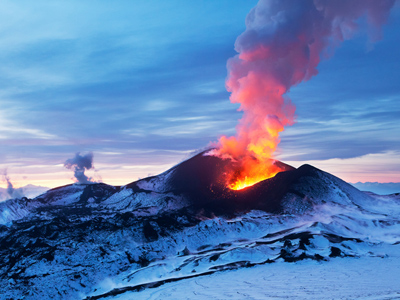
Volcanoes at the Edge of Tectonic Plates
This GCSE Geography quiz challenges you on volcanoes at the edge of tectonic plates. You should be well aware that volcanoes exist mainly in narrow belts around the world. As the theory of plate tectonics was developed and improved, it became possible to understand how volcanoes were formed, why there were several different types of volcano and why they existed mainly in certain areas of the world.
Before plate tectonics, no-one really understood how volcanoes were formed. It was known that there were magma chambers under volcanoes and that there were different types of volcano which depended on what lava was erupted, but that was about all.
Ready for more?
not all...
quizzers. Try to win a coveted spot on our Hall of Fame Page.







